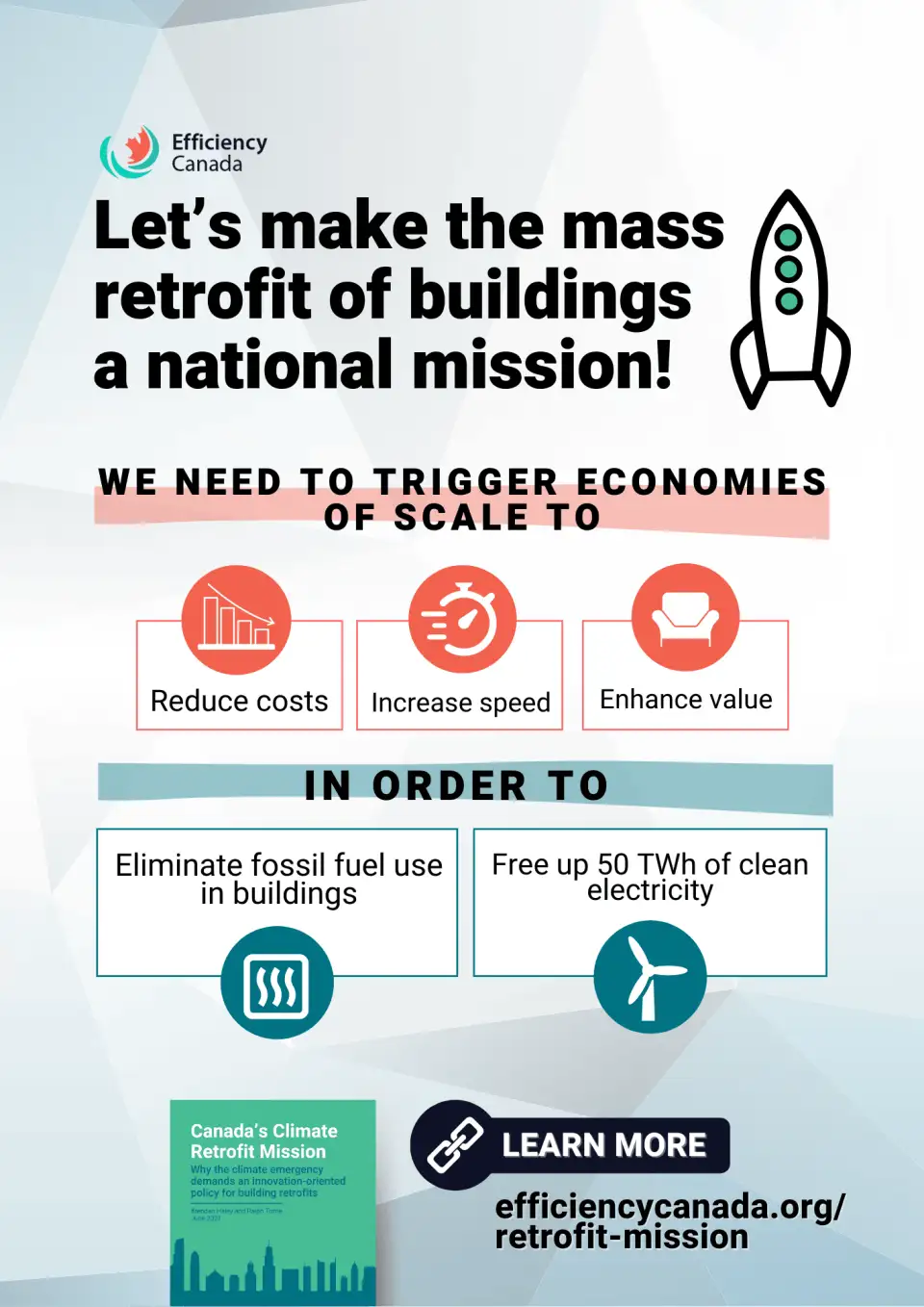
“There’s no physical barrier to retrofitting all buildings, but we need audacious thinking and a willingness to try,” says Brendan Haley, Efficiency Canada’s policy director and one of the coauthors of a recent report, “Canada’s Climate Retrofit Mission”. Haley and co-author Ralph Torrie, president of Torrie Smith Associates, call for adopting a mission-oriented retrofit program that reshapes existing retrofit markets, creating economies of scale and learning and mitigating the onus on individual building owners of conducting deep energy renovations. While new technologies are important to the success of this mission, new business models and organizational systems are likely more critical.
Haley and Torrie present two mass retrofit scenarios in the report, calculating the societal benefits and rough program costs of the two scenarios. One responds to the present climate emergency with an unprecedented pace and scale, retrofitting Canada’s entire building stock by 2035. The second is a bit less ambitious with retrofits completed by 2050. Not surprisingly the costs are large and so are the societal benefits, including freeing up substantial renewable energy resources for electrifying and decarbonizing other sectors. The significant program costs—at least $39 billion annually for the first scenario and $20 billion annually for the second—are actually less than the $80 billion Canadians currently spend annually on building renovation.

To accomplish either scenario the authors envision local or regional market development teams aggregating building owners, suppliers, and project design and delivery specialists. These teams would be supported by a national retrofit mission leader, likely a crown corporation, that would coordinate efforts and distribute funding. By upping the game in terms of performance, Haley anticipates seeing transformations in the building retrofit industry and cost savings, similar to what the wind and solar energy industries have experienced. “We are looking for systems of deployment that work, with the right combination of financing, user engagement, and offsite construction technologies plus onsite approaches,” Haley says.
Canada is not inexperienced with meeting large-scale technological challenges in its relatively harsh climates, Haley points out, such as installing the needed infrastructure for long-distance transmission of electricity. The development of the tar sands fields was another major technological feat, although not one an environmentalist would embrace. In terms of scope, the retrofit challenge is similar in scale, Haley asserts.

Several programs in Canada—Pembina Institute’s Reframed Initiative and NRCan’s Prefabricated Exterior Energy Retrofits to name just two—and a few others south of the border are already experimenting with retrofit scaling approaches. Haley is encouraged by these efforts and is pushing for changes in the policy environment that will allow these pilot programs to take off and for their lessons to be replicated across hundreds of other projects. “A lot of these initiatives are awkwardly fitting into existing policy supports,” he points out, such as the continued focus on traditional cost-benefit analyses, which lock retrofits into shallow energy savings or expensive niche projects.
Following in the footsteps of innovation theorist Mariana Mazzucato, Haley and Torrie advocate for a retrofit mission policy approach that is societally relevant and sets clear, ambitious goals. Achieving these goals, the authors say, will depend on greater reliance on such techniques as: integrated design and project delivery, prefabrication of building facades and HVAC systems, mass customization tools that manage distinct building characteristics with greater ease, aggregation of retrofit projects into single portfolios, the increased use of digital technologies, and better ways to meet building user needs. The exact mix will likely vary regionally as each area customizes its own bottom-up solutions.
Efficiency Canada, a research think tank, is a relative newcomer on the policy scene, having been started in 2018 to engage the energy efficiency sector and its allies in a common mission to raise the profile of this work and support political advocacy. The organization has already had a noticeable impact. “The Canada Infrastructure Bank recently made building retrofits part of its mandate, which is something we were advocating for when we first started the organization,” Haley notes. Here’s hoping for swift success in its other retrofit endeavors.